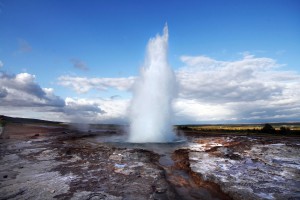
The report provides detailed market analysis, information and insights, including:
– Historic and forecast tourist volumes covering the entire Icelandic travel and tourism sector
– Detailed analysis of tourist spending patterns in Iceland for various categories in the travel and tourism sector, such as accommodation, sightseeing and entertainment, foodservice, transport, retail, travel intermediaries and others
– Detailed market classification across each category, with analysis using similar metrics
– Detailed analysis of the airline, hotel, car rental and travel intermediaries industries
Summary
The Icelandic travel and tourism sector?s review-period (2008-2012) performance was adversely affected by the country?s slip into recession in 2008. However, despite the volcanic eruption at Eyjafjallaj?kull in 2010, international and domestic tourism activity increased overall. Domestic tourist volumes rose at a review-period CAGR of 1.89% while international arrivals increased at a CAGR of 7.60%. According to the World Travel and Tourism Council (WTTC), in 2012, the sector accounted for 19.5% of Icelandic GDP and 20.9% of total employment.
Scope
This?report provides an extensive analysis related to tourism demands and flows in Iceland:
– It details historical values for the Icelandic tourism sector for 2008?2012, along with forecast figures for 2013?2017
– It provides comprehensive analysis of the travel and tourism demand factors, with values for both the 2008?2012 review period and the 2013?2017 forecast period
– The report provides a detailed analysis and forecast of domestic, inbound and outbound tourist flows in Iceland
– It provides comprehensive analysis of trends inthe airline, hotel, car rental and travel intermediaries industry with values for both the 2008?2012 review period and the 2013?2017 forecast period
Key Highlights
– The Icelandic travel and tourism sector registered a downturn in 2008 as the country?s economy slipped into crisis and the country’s three major privately owned commercial banks ? Glitnir, Landsbanki and Kaupthing ? collapsed. According to World Bank data, Iceland?s GDP shrank by 6.6% in 2009 and 4.1% in 2010.
– The dip in travel and tourism activity in the country was expected to decline further following the volcanic eruption at Eyjafjallaj?kull in 2010. However, the disaster turned into an opportunity as thousands of tourists flocked to Iceland to witness the volcanic activity. Media coverage of the eruption presented Iceland on an international platform. Furthermore, the devaluation of the kr?na due to the financial crisis also pushed down the price of goods and services in the country. These factors supported the growth of what became known as ?volcano tourism? by many Icelandic tour operators.
– Domestic tourism is dependent on income levels and propensity to travel. A high unemployment rate leads to a fall in residents? inclination to spend. During the review period, domestic tourism was impacted by a high unemployment rate prevailing in the country in the wake of the financial crisis. However, the unemployment rate, which increased from 2.2% in June 2008 to 7.5% in June 2009, fell to 5.2% in June 2012.
– Iceland also recorded an increase in the number of visitors from emerging markets such as China and Russia. According to the Icelandic Tourist Board, between January and September 2013, the number of Chinese tourists through Keflav?k International Airport increased at a rate of 24.4%, while the number of Russian visitors increased at a rate of 54.3%. In April 2013, a Free Trade Agreement (FTA) was signed between Iceland and China; it is expected to further strengthen trade and tourism ties between the two countries.
– Growth in the volume international departures from Iceland is expected over the forecast period. The expected growth can be attributed to the increasing air capacity and better connectivity to key destinations. For example, Iceland Air launched services to Anchorage in Alaska during the summer months (May?September) of 2013. The company also increased the frequency of its flights on key routes. Gatwick?Iceland was increased to four times a week and London?Iceland was increased to three times a week.
– Wow Air, launched in May 2012, was the second low-cost airline to be launched in Iceland after Iceland Express which began operating in 2002. In October 2012, Wow Air acquired Iceland Express to become Iceland?s only low-cost airline. In November 2013, the airline announced its plan to launch direct transatlantic routes to the US. The new service, which will be launched in spring 2014, will fly six times a week between Keflavik International Airport and Boston. The airline hopes to capture a larger share of Iceland?s tourism market, which increased by 20% in 2012, with the new services.
– The Icelandic hotel market faces the issue of seasonality in tourism activity, which impacts hotel occupancy rates and revenues. According to Statistics Iceland, in Greater Reykjav?k, Iceland?s capital region and the major tourism hub, a 91.9% occupancy rate was recorded in June 2012, while an occupancy rate of 39.6% was recorded in January in the same year. In areas such as the Westfjords, occupancy rates dropped to as low as 7.2% in January 2012, while a 58.3% occupancy rate was recorded in June 2012.
– The increasing number of tourists and growth in car rental business led to the entry of new companies into the market. In August 2013, Red Car Rental, a part of Iceland?s leading travel network Kynnisferdir, was launched. In addition to offering a brand new fleet of cars, the company also offered a launch discount of 10% on pre-paid bookings to attract customers.
– Icelandic tour operators have benefitted from the shooting of films and television series? in the country. For example, in 2013, Iceland Travel, a leading Icelandic tour operator, launched ?Game of Thrones?-themed tours from the UK to Iceland. The tour, which takes travelers to the filming locations of the Game of Thrones television series, will be on offer between 1st October 2013 and 30th April 2014.
Click here to read more.

